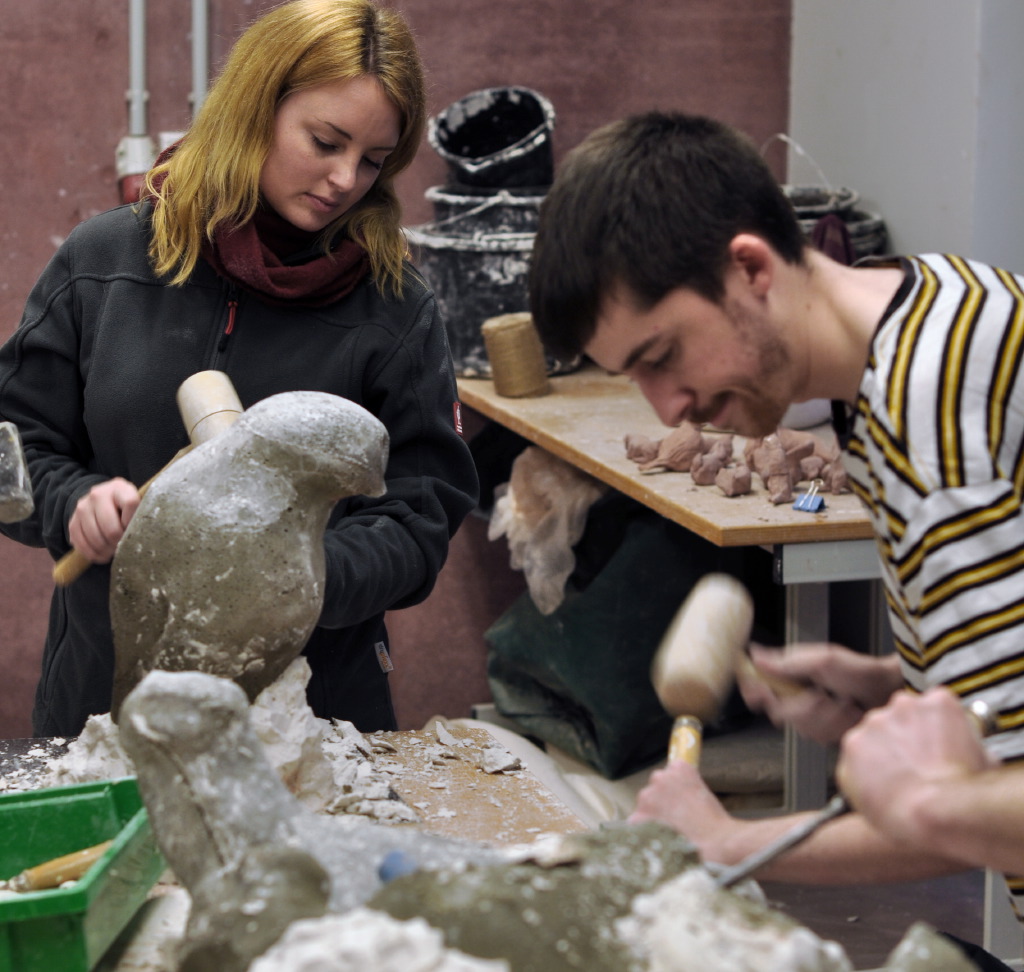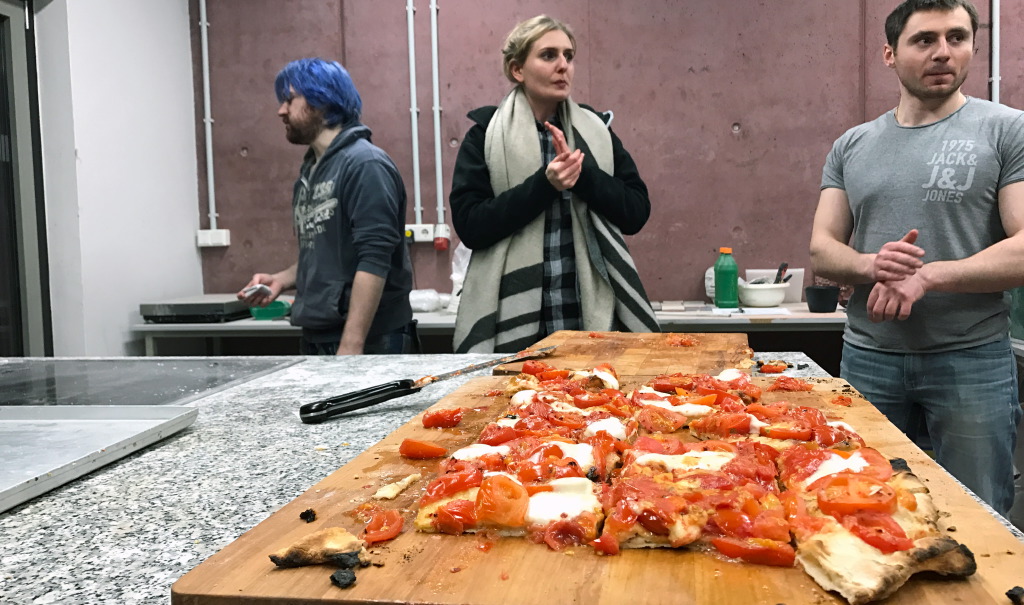Betonskulptur: making of
Betonplastik
organische Form, Kurve, Schale
- analoge Unterrichtsmethode: Modellieren
- Material: Ton, Gips, Beton
- Anwendbarkeit: Erwerb dreidimensionaler Kriterien, Volumen in Bewegung
Inhalt
Dieses Wahlfach bietet die Chance sich an einer freien, bildhauerischen Arbeit zu versuchen.
Vordergründig ist der Wechsel des Faches, von der Architektur zur Bildhauerei, für den Architekturstudenten abwechslungsreich und entspannend. Auf den zweiten Blick jedoch gewinnt er/sie, durch diesen Perspektivwechsel, leichter Einblick in allgemeine plastische Kriterien, als bei einer angewandten Bauaufgabe.
Das Verhältnis von Masse zu Detail, und damit einhergehend der Maßstab der Form, werden am organischen Objekt analysiert. Die optische Wirksamkeit von Wölbung, Kurve, Schale sind das zentrale Anliegen. Nebenbei bietet die Schale ein stabiles statisches Prinzip, dass es ermöglicht sparsam im Material zu arbeiten und gleichzeitig ein Maximum an Lebendigkeit zu erreichen.
Eine freie Plastik wird aus keramischem Ton modelliert. Diese wird, nach ihrer Vollendung, mit einer Schalungstechnik aus Gips abgeformt und schließlich in Beton gegossen.
Sowohl das keramische Originalmodell, als auch die Betonplastik werden hohl hergestellt. Für den künstlerischen Herstellungsprozess ist ein hohler, gefäßartiger Aufbau ein wichtiges Instrument der Erkenntnis, der gesamte Schaffensprozess endet gedanklich und technisch in Querschnitten statt. Es wird so vermieden den Modellierprozess als eine Addition von Oberflächendetails zu verstehen. Das Objekt wird in Schnitten und Aufrissen erlebt, was dem Denken des Architekten entspricht. Diese Modelliertechnik benötigt ein Minimum an technischer Vorbereitung und fordert das Vorstellungsvermögen während der Entstehung.
concrete sculpture organic volume, curve, bowl
- teaching method: modelling,
- material: clay, plaster, concrete
- usability of the module: Application of three-dimensional criteria, volume in motion Awareness in using curves
content
In this elective you will have the chance to make experience by creating a free sculptural object. The content of this class is continuing directly the impressions from the sculptural workshop during the welcome week.
Super cial, the change of subject, from Architecture to sculp- ture, is a relaxing and diverse experience.
The background of this idea, the shift into another subject, offers an easer way to win three-dimensional criteria, more than by designing a building with functions.
The relationship between large volume and small detail and the noticeable scale of that object is one thing. The visual potency from curve and bowing another aspect.
By the way, the bowl, as an static principle, allows us to be economical with material and to reach a maximum in vitality.
The rst step is the modelling of a free ceramic sculpture. The second step is, that we will transform the model into concrete, after accomplishing. We produce casting shells and so on… Both objects, the clay model and the concrete object are hollow.
For the modelling and the designing process the hollow ceramic technique has unique in uence to make the object vivid. When you build a hollow clay sculpture, from the bottom to the top, you have to think in every moment in sections, like architects have to.


























